Rhinoplasty is not considered a painful surgery. The most common complaint in the first few days is nasal obstruction or congestion, which results from natural swelling after the procedure and gradually improves.
Surgery
Ultrasonic (Piezo) rhinoplasty involves the use of a delicate electronic device that operates with ultrasonic waves, allowing precise cutting and shaping of dense structures such as bone. This enables millimetric bone cuts and reshaping with minimal overheating and reduced damage to surrounding structures. As a result, surgical outcomes are more effective and predictable, with improved healing, less swelling, bruising, pain, and postoperative complications, making the recovery period almost painless in many cases.
A common residual issue is mild nasal congestion in patients who undergo septum surgery, as a silicone intranasal splint is placed to maintain septal alignment. Notably, no nasal packing is used.
Immediate postoperative care is minimal: avoid physical exertion and sleep with the head elevated during the first week; avoid prolonged sun exposure for the first three months (generally, sunscreen with SPF 50 or higher is recommended for the first year after rhinoplasty).
At the end of the first week, a postoperative consultation is held, during which the molded nasal splint is removed, any sutures (if present) are taken out, and the silicone septal splint is removed for patients who had septum surgery.
Cases of Ultrasonic Rhinoplasty
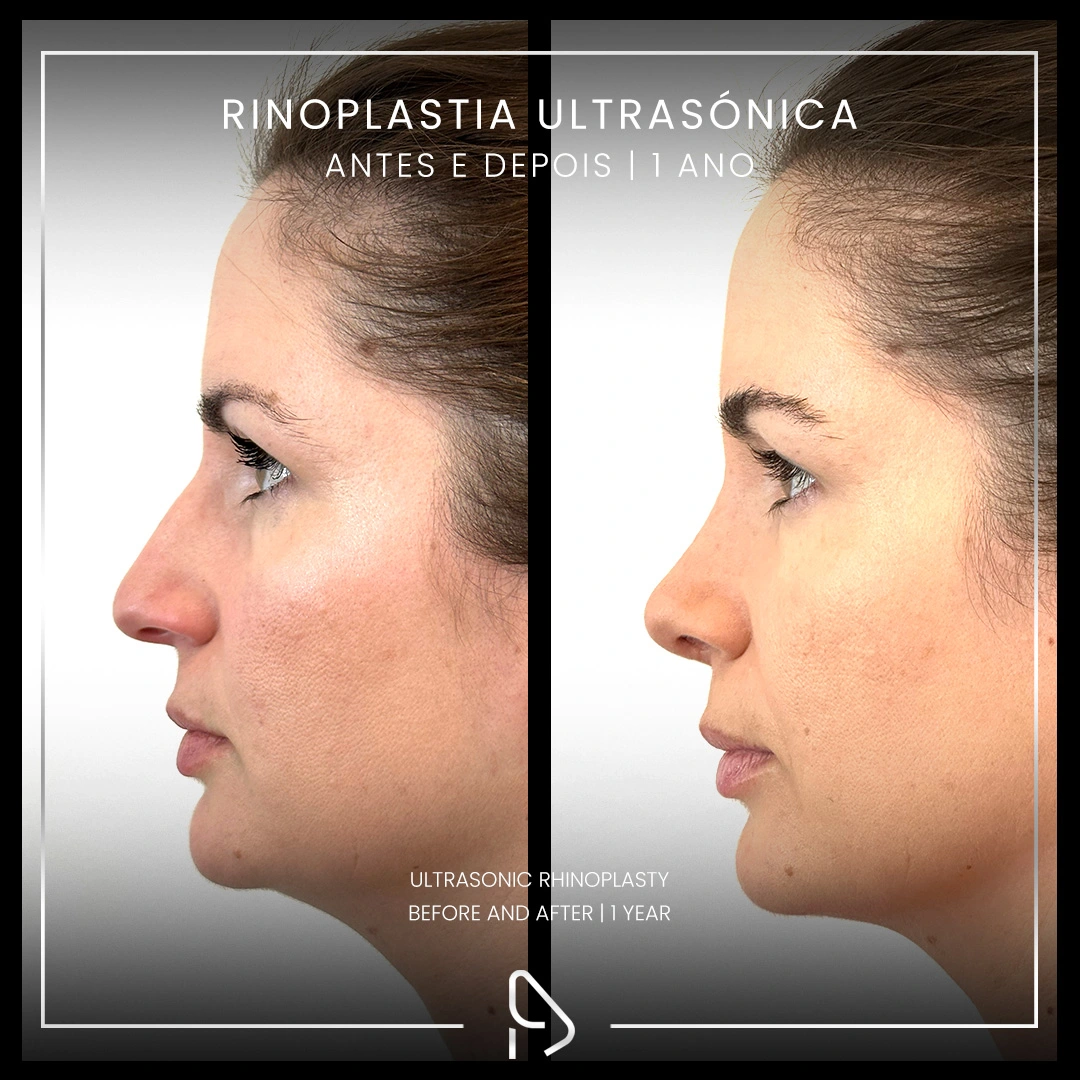
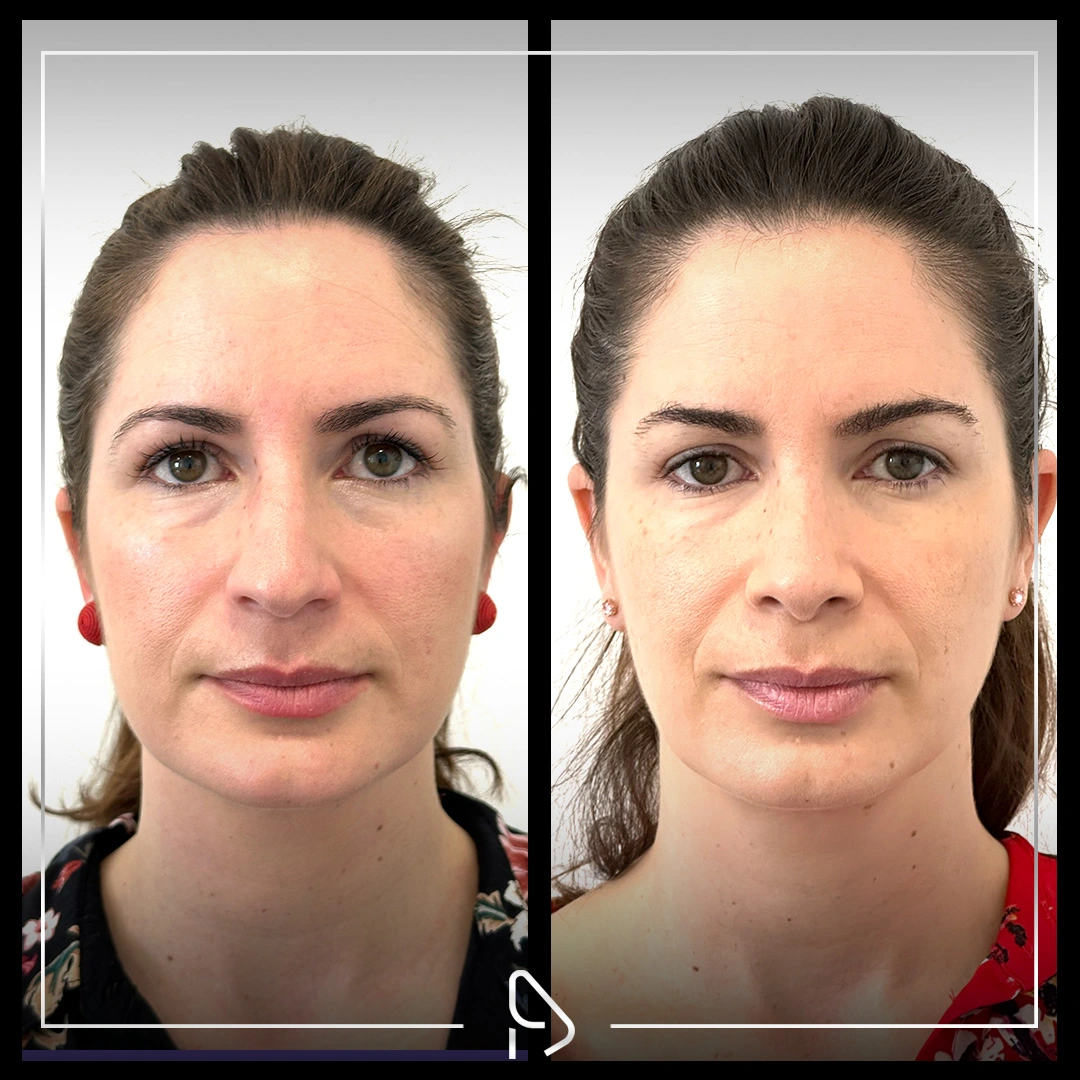
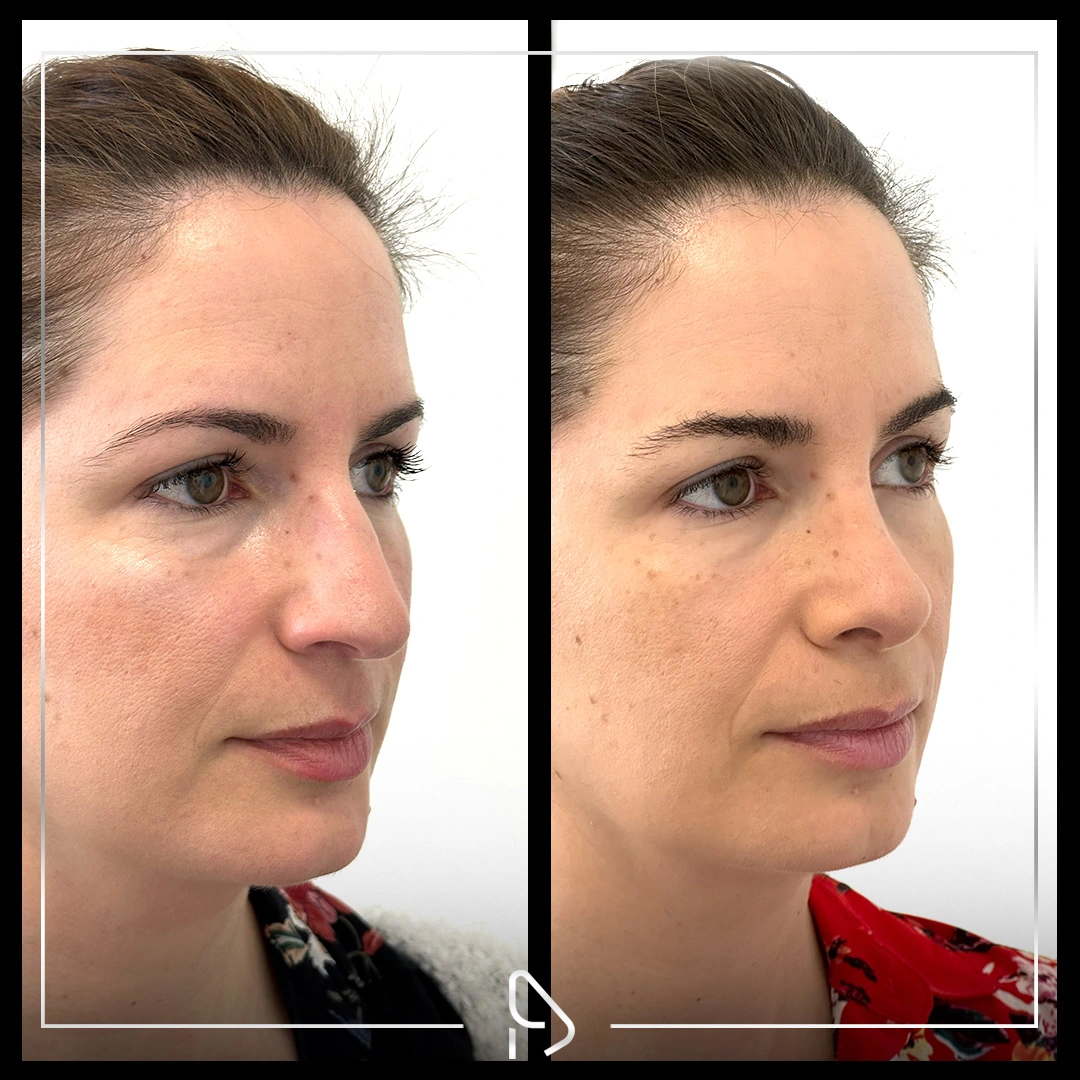
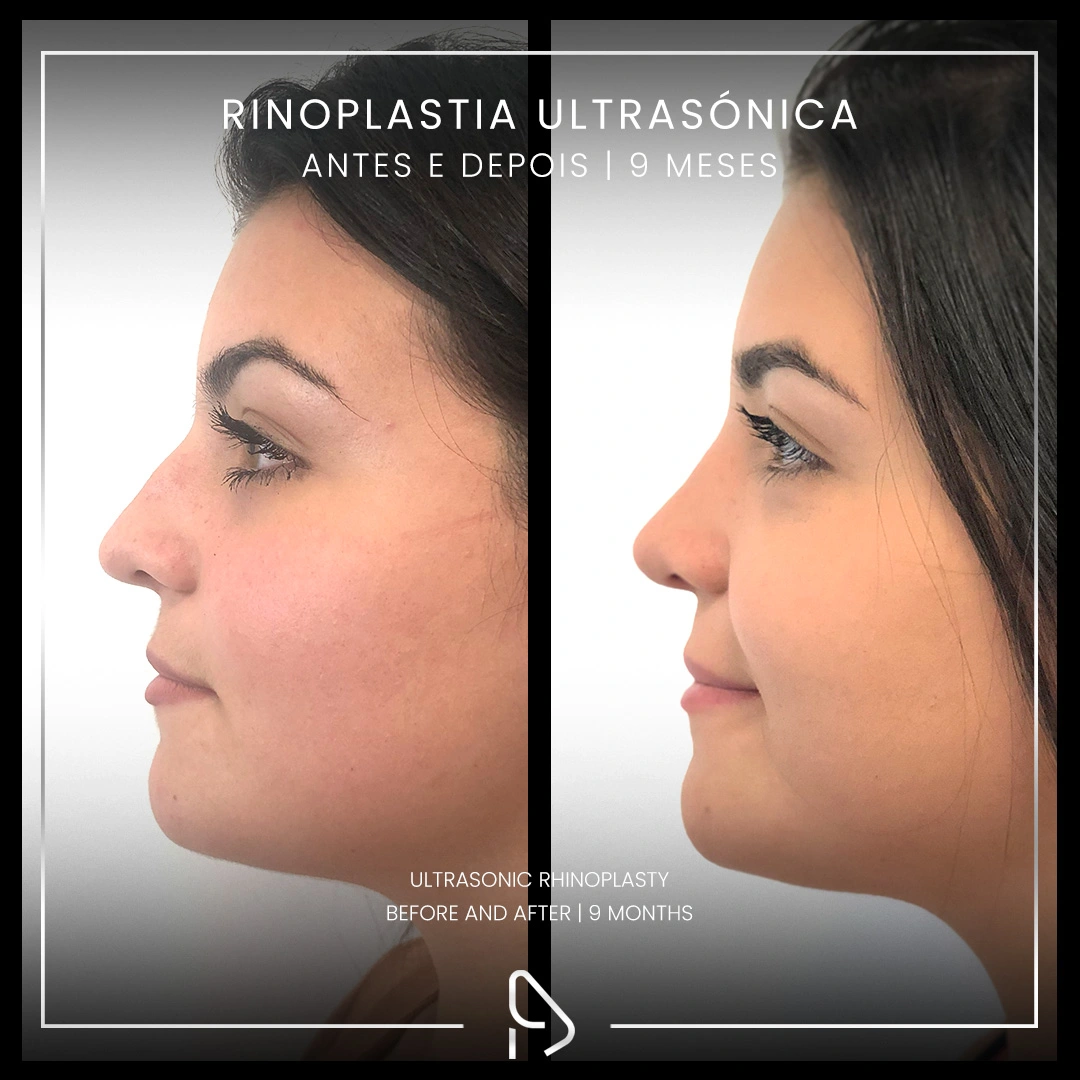
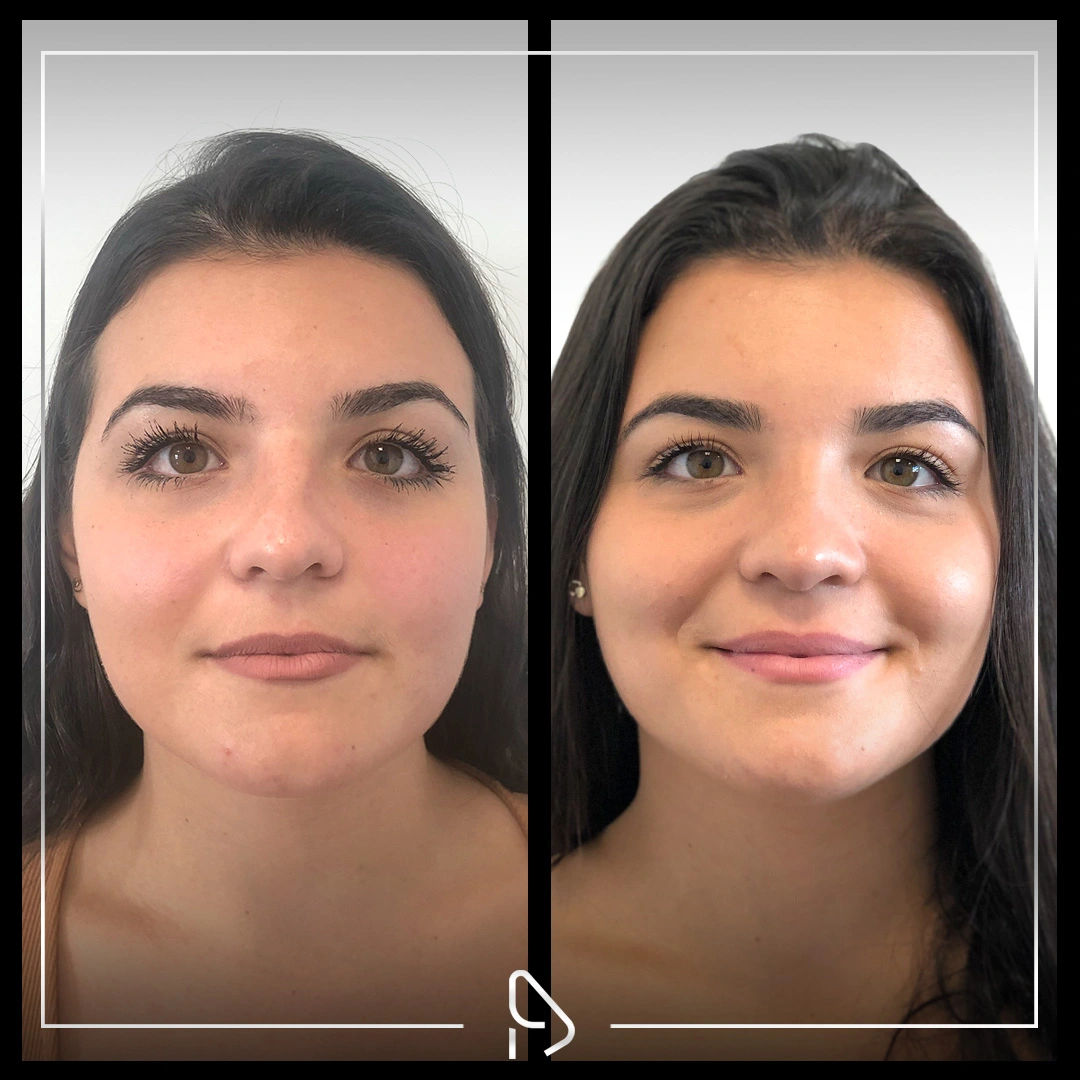
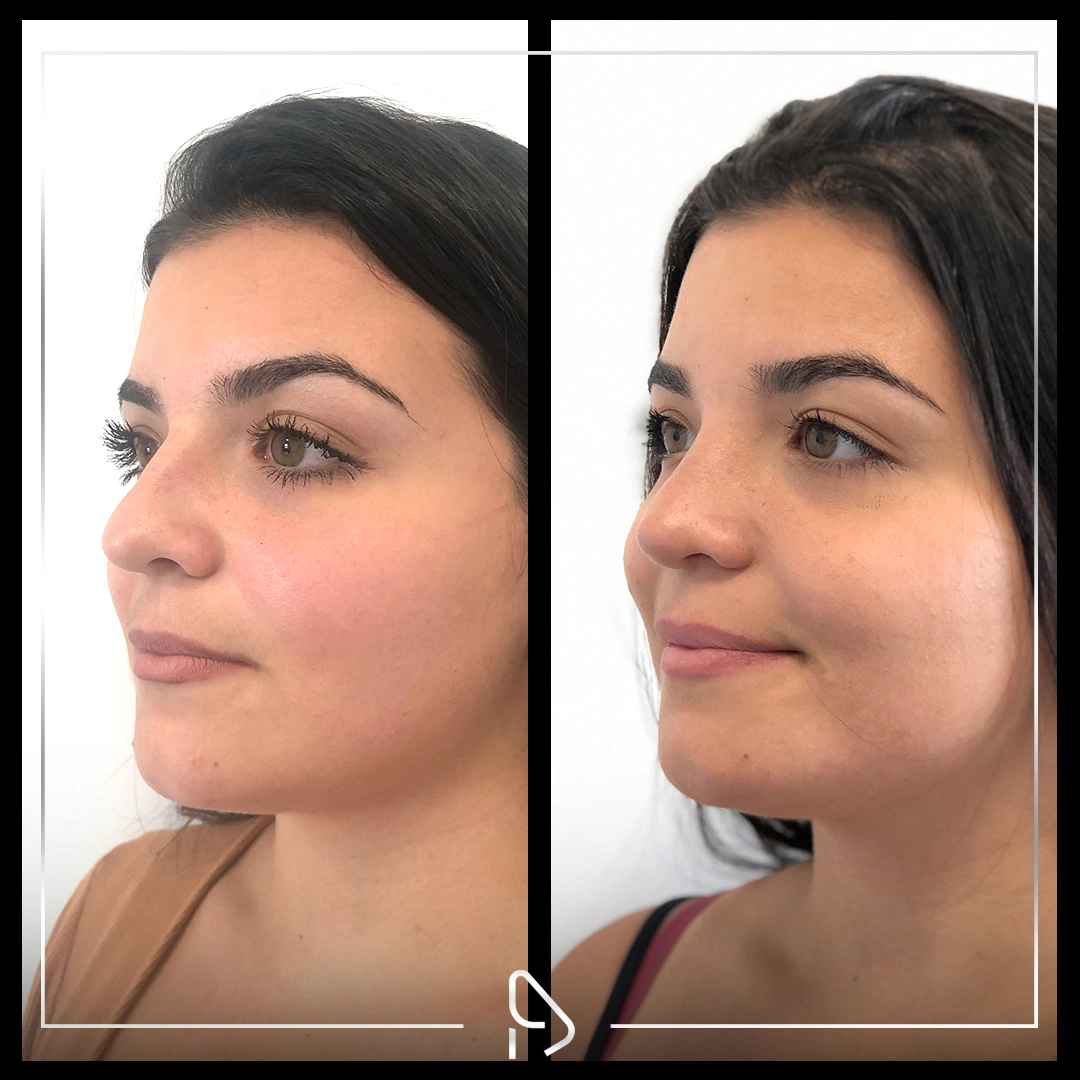
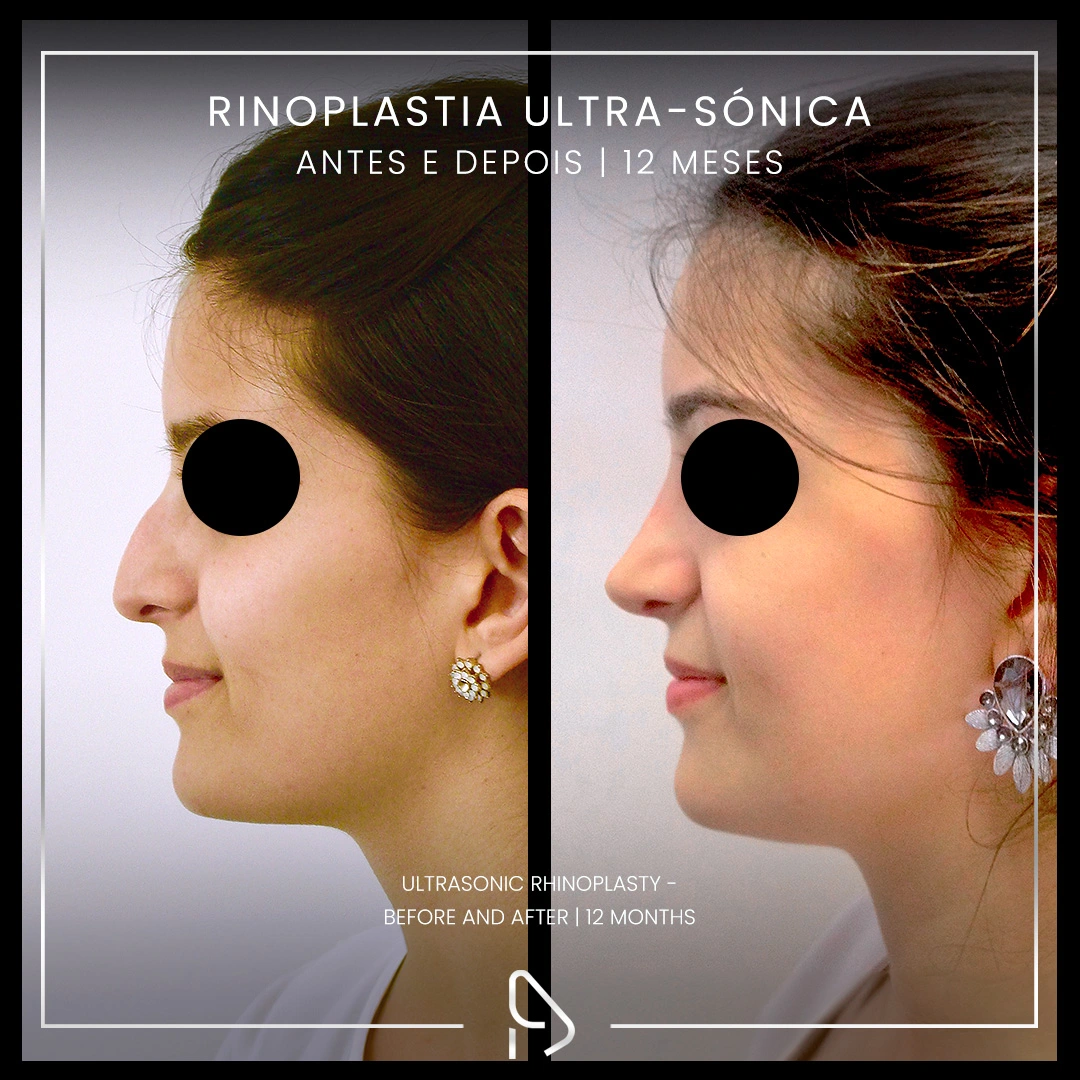
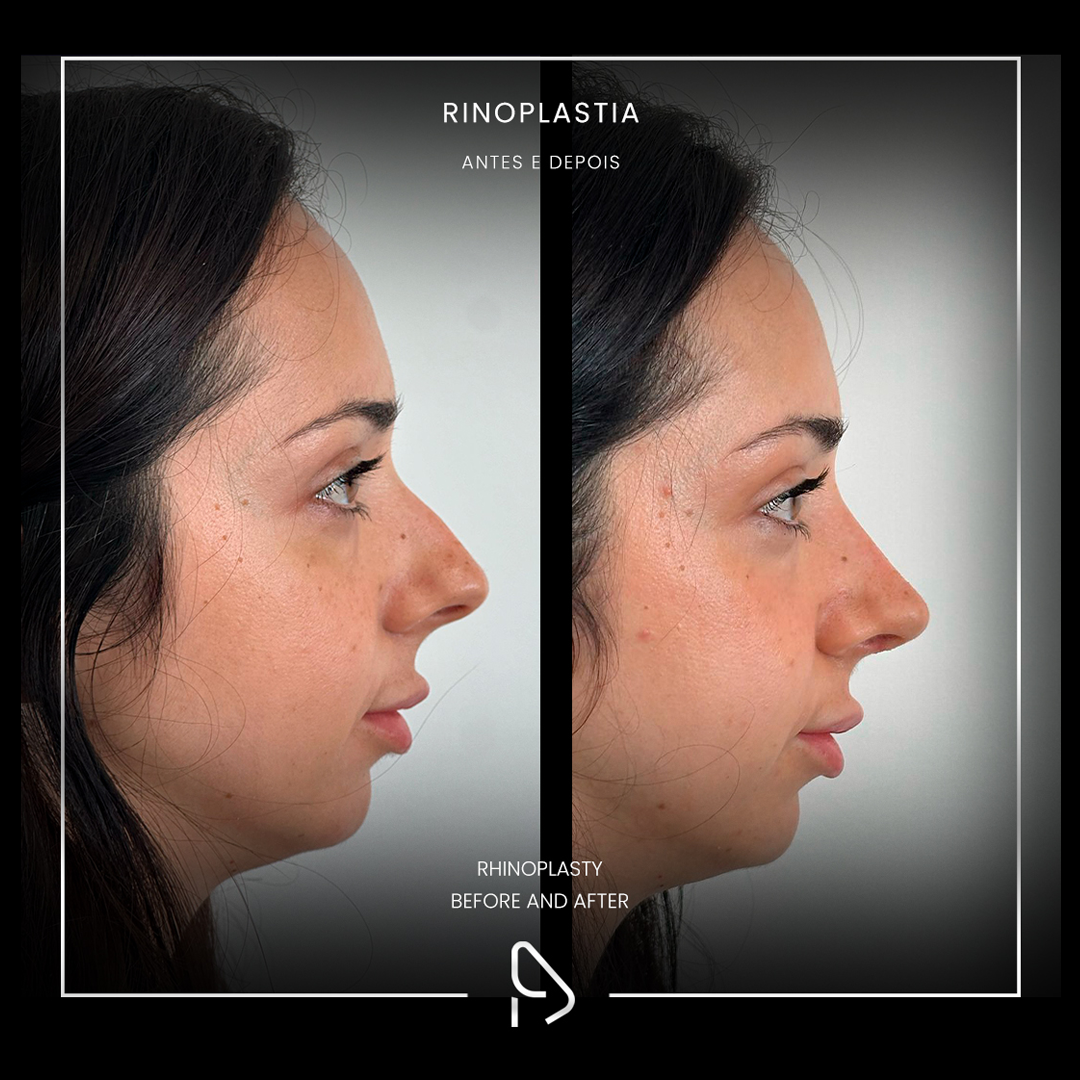
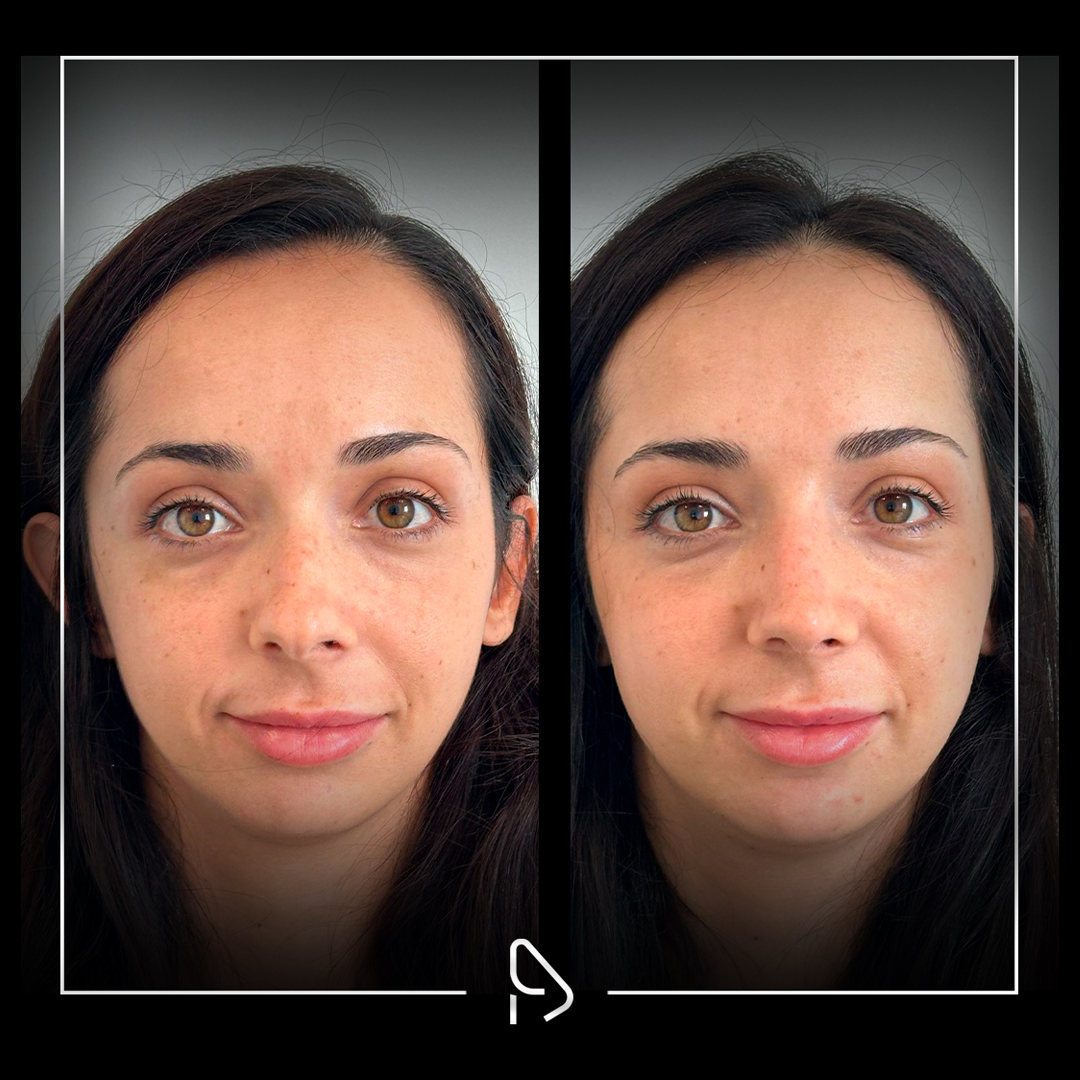
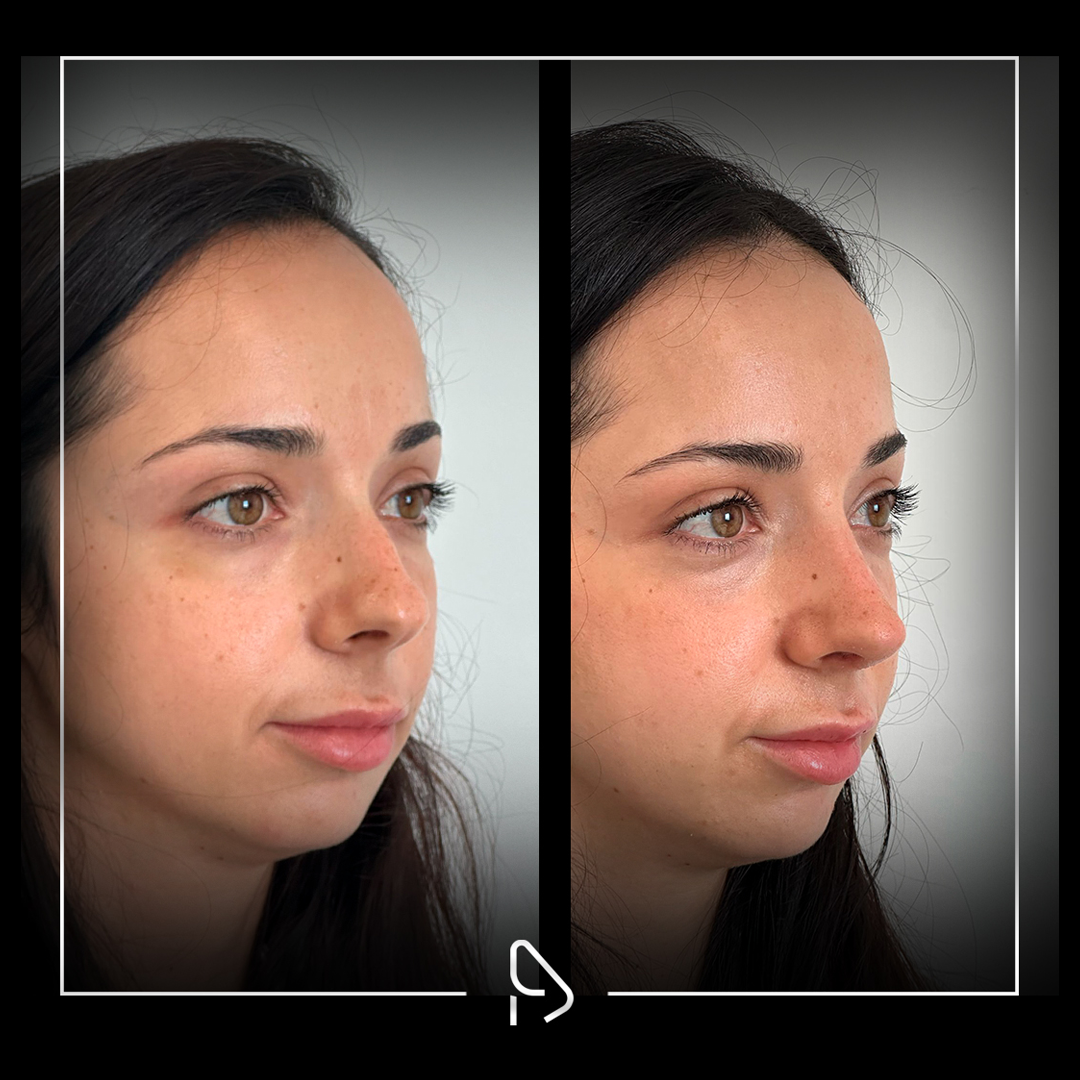
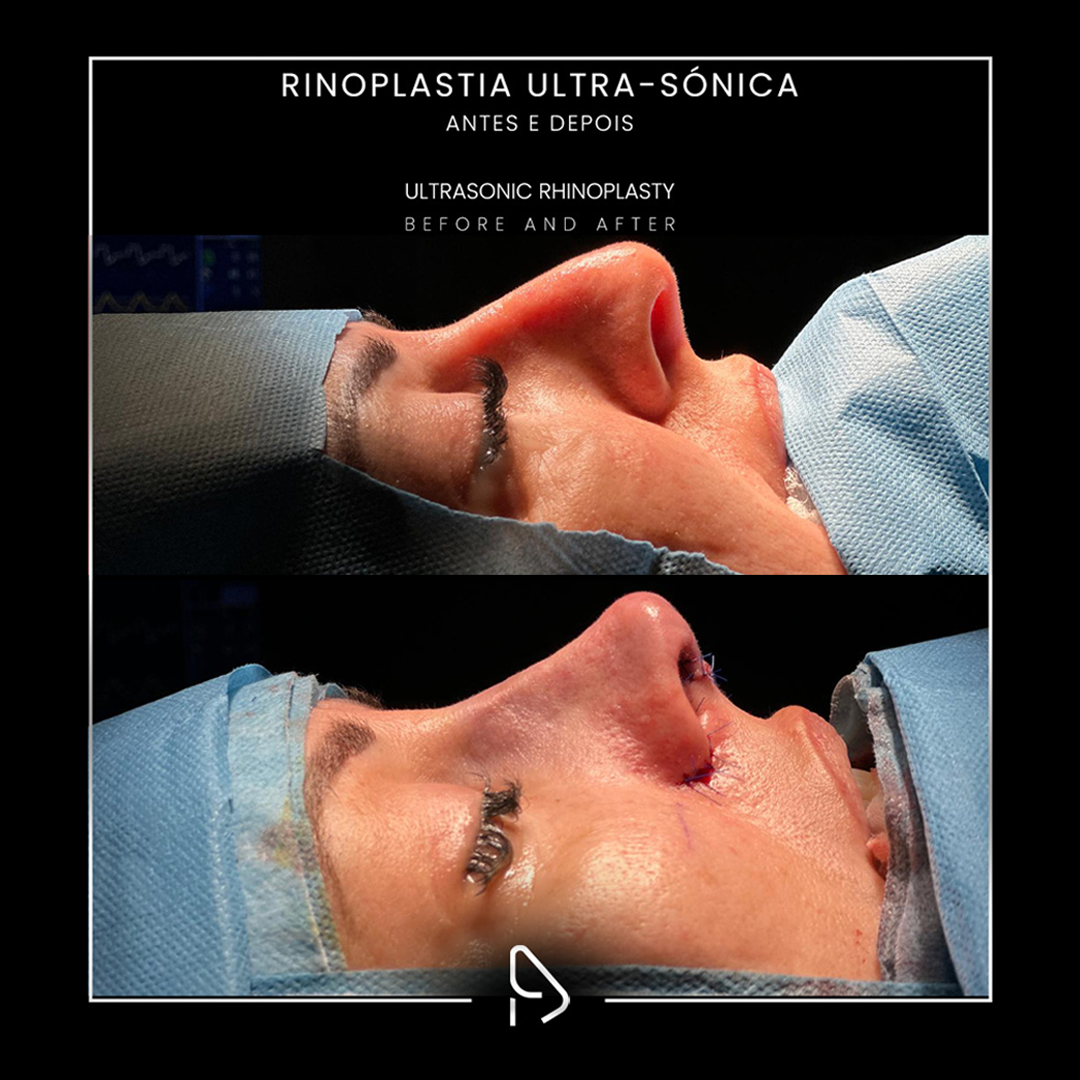
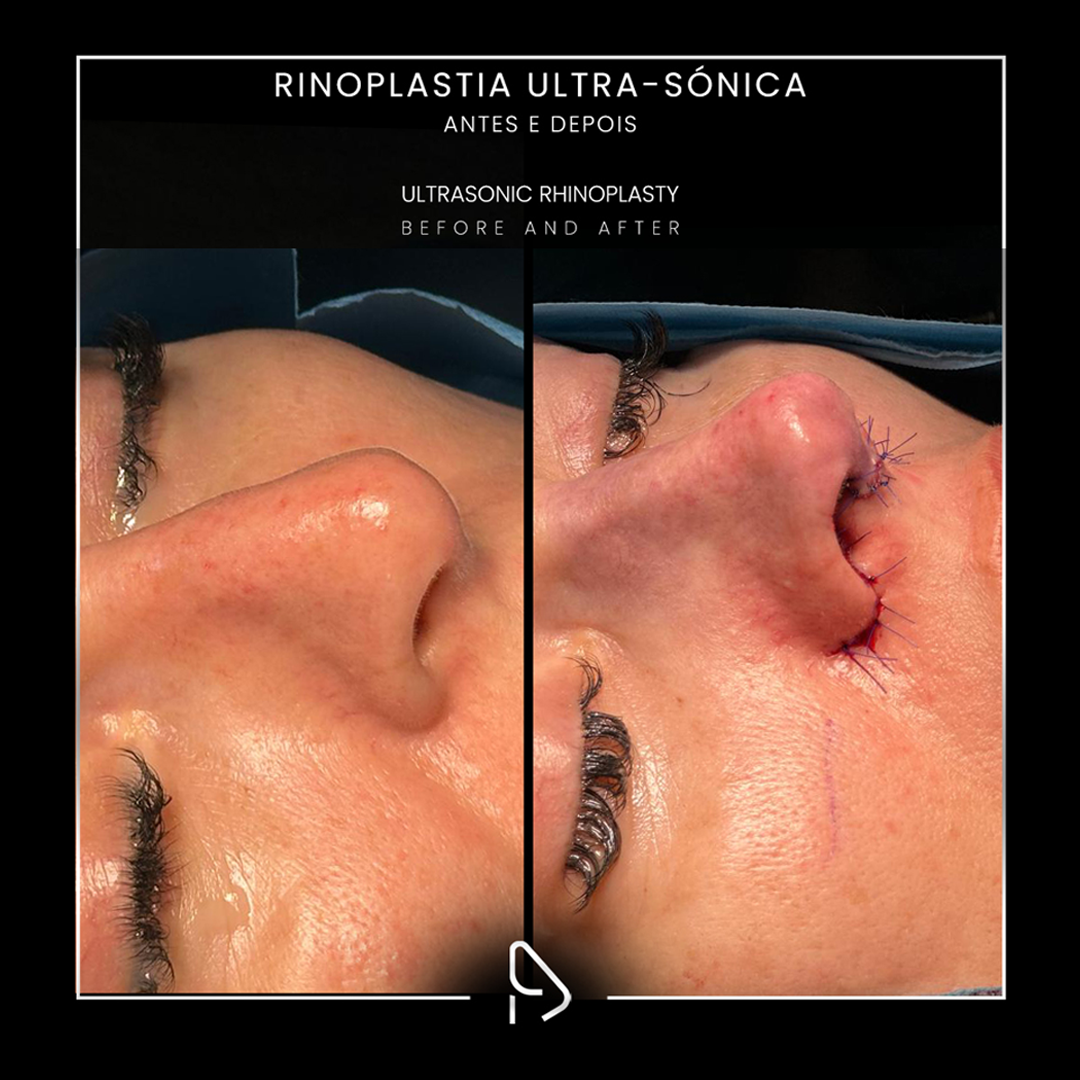
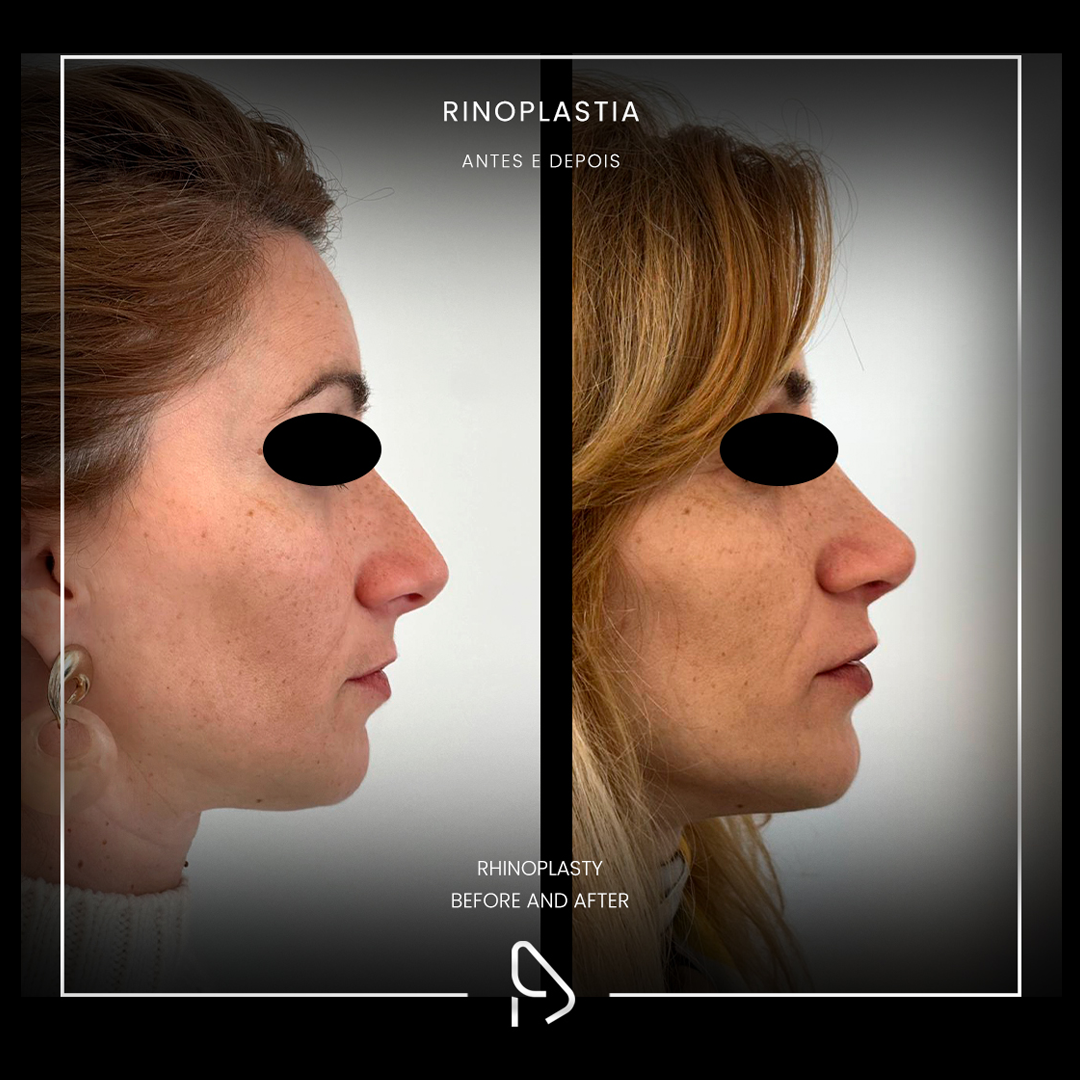
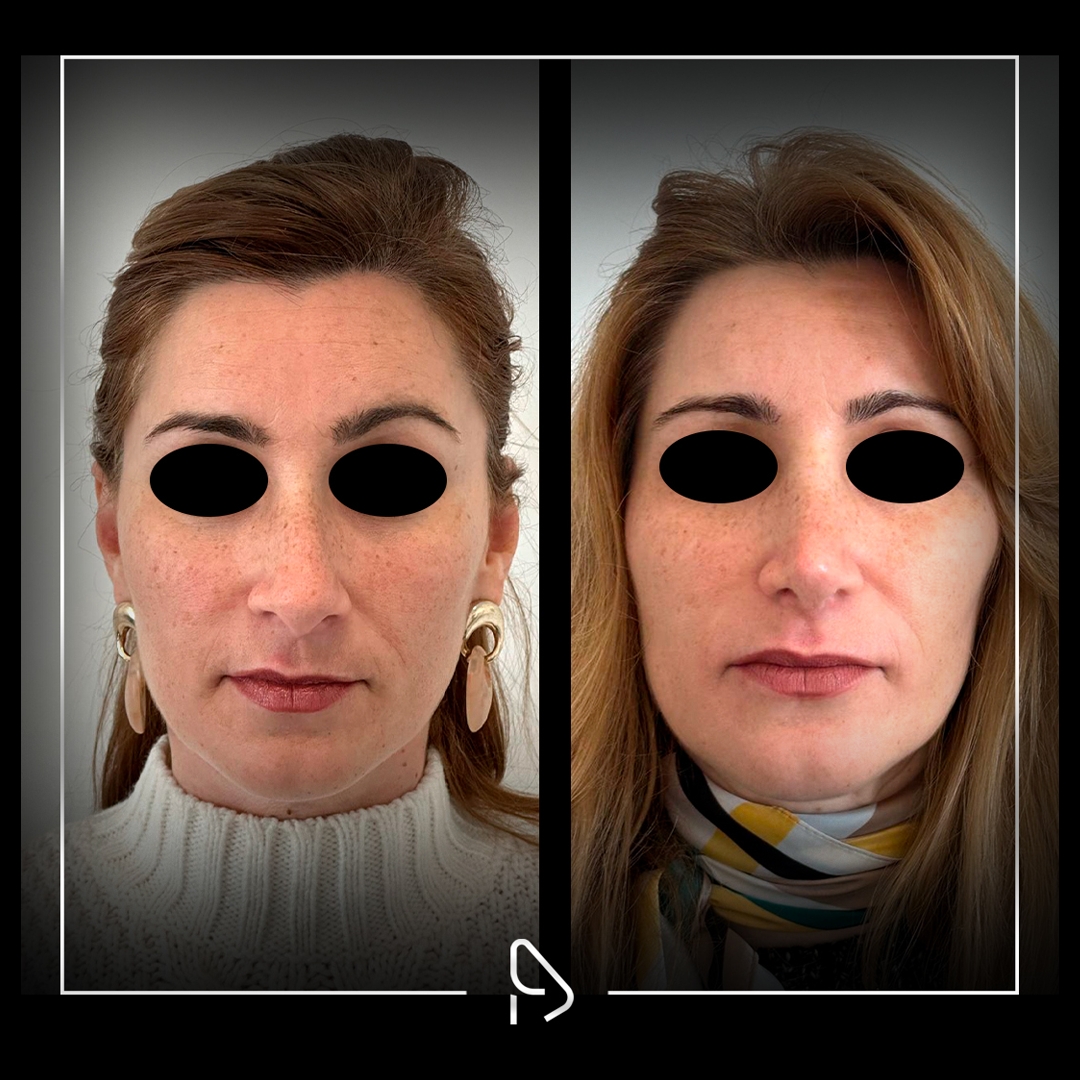
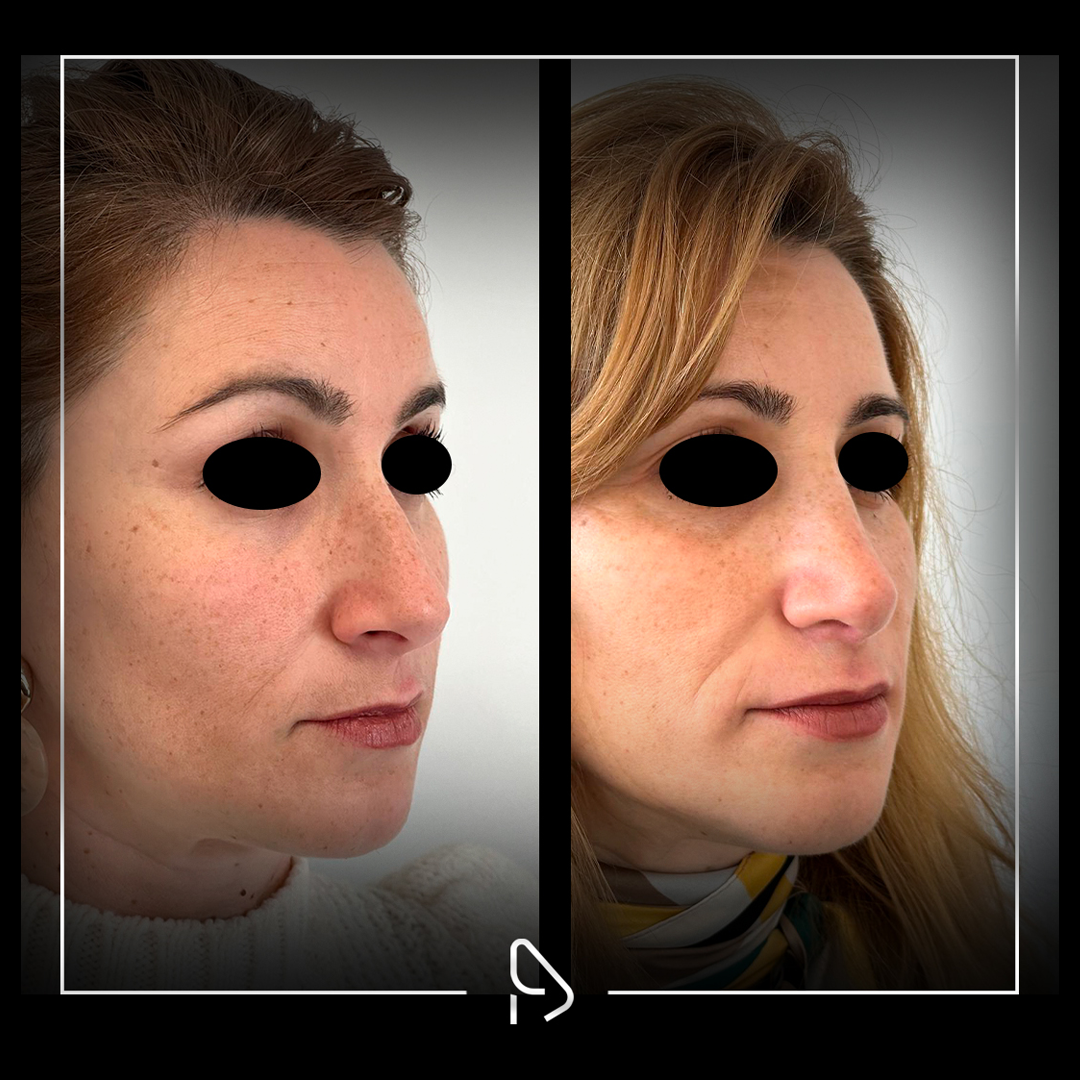
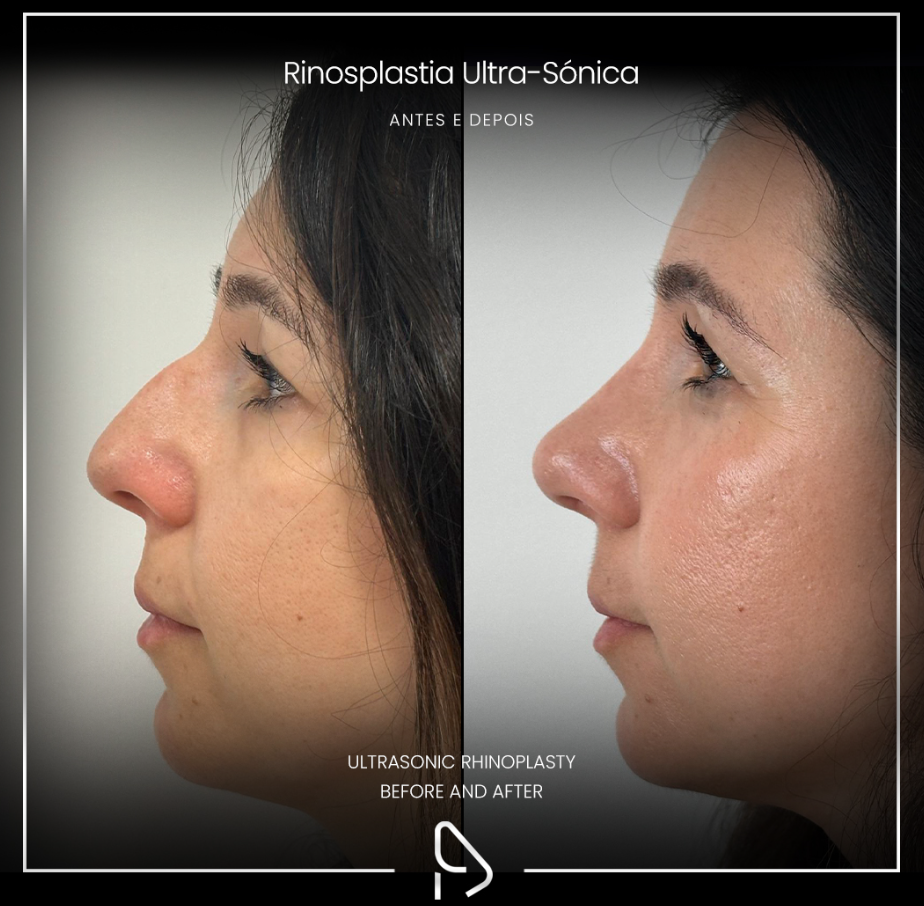
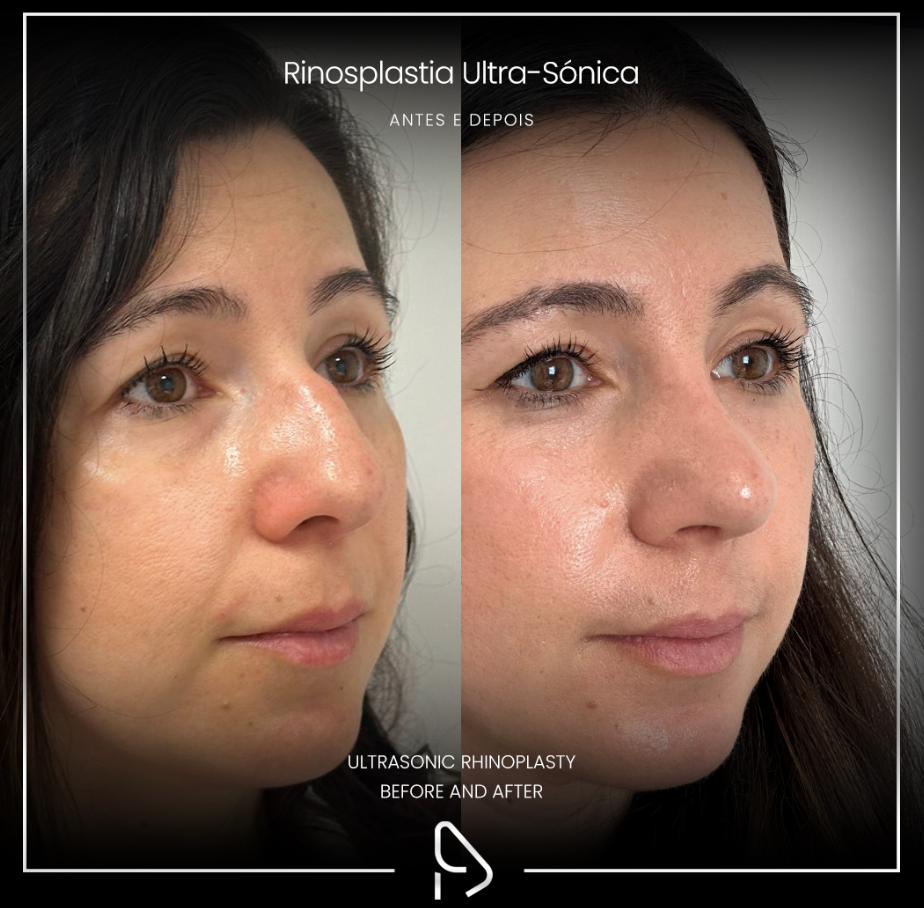
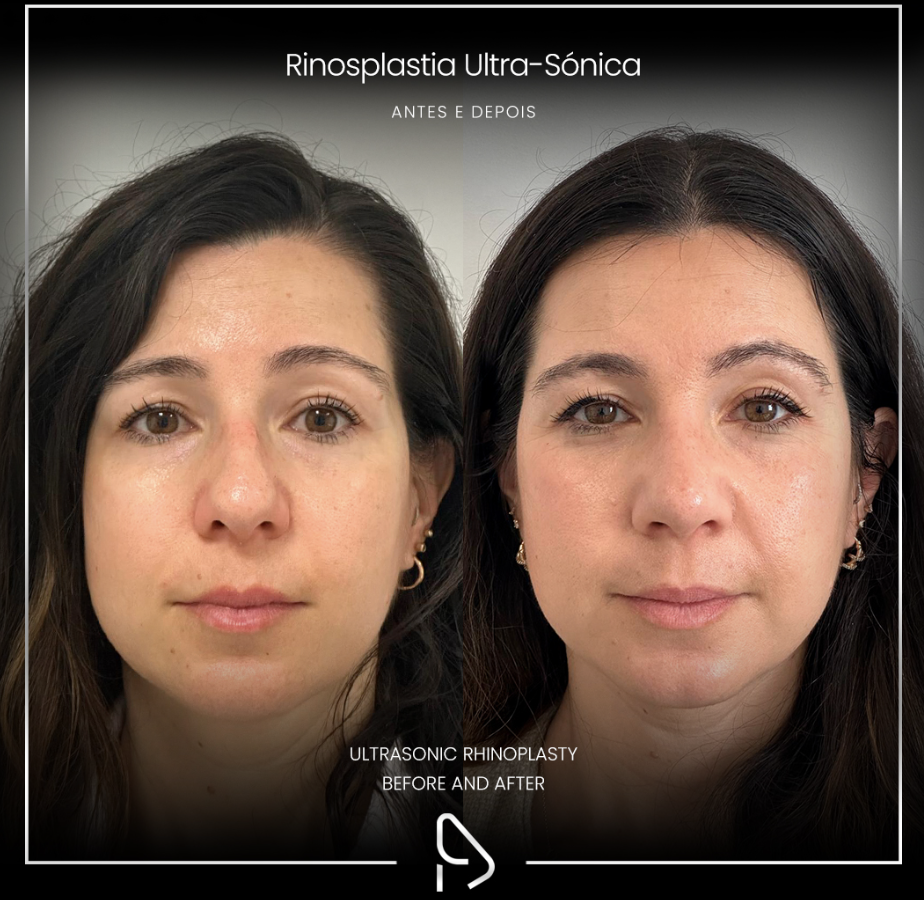
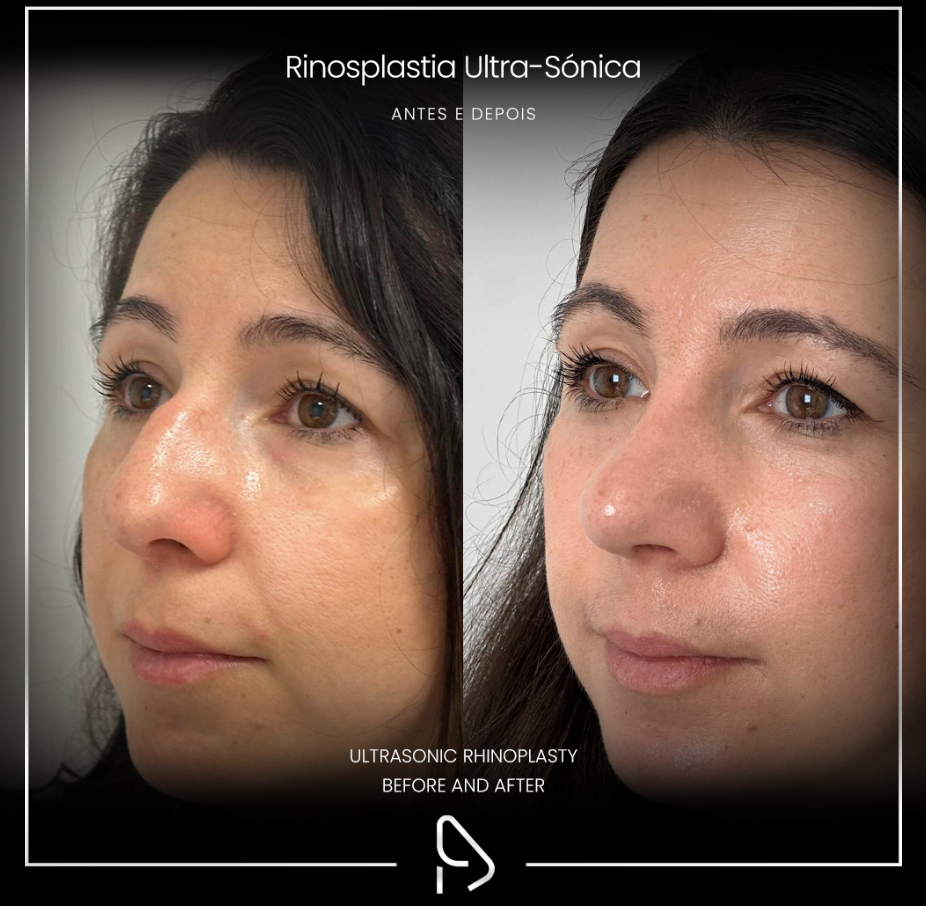
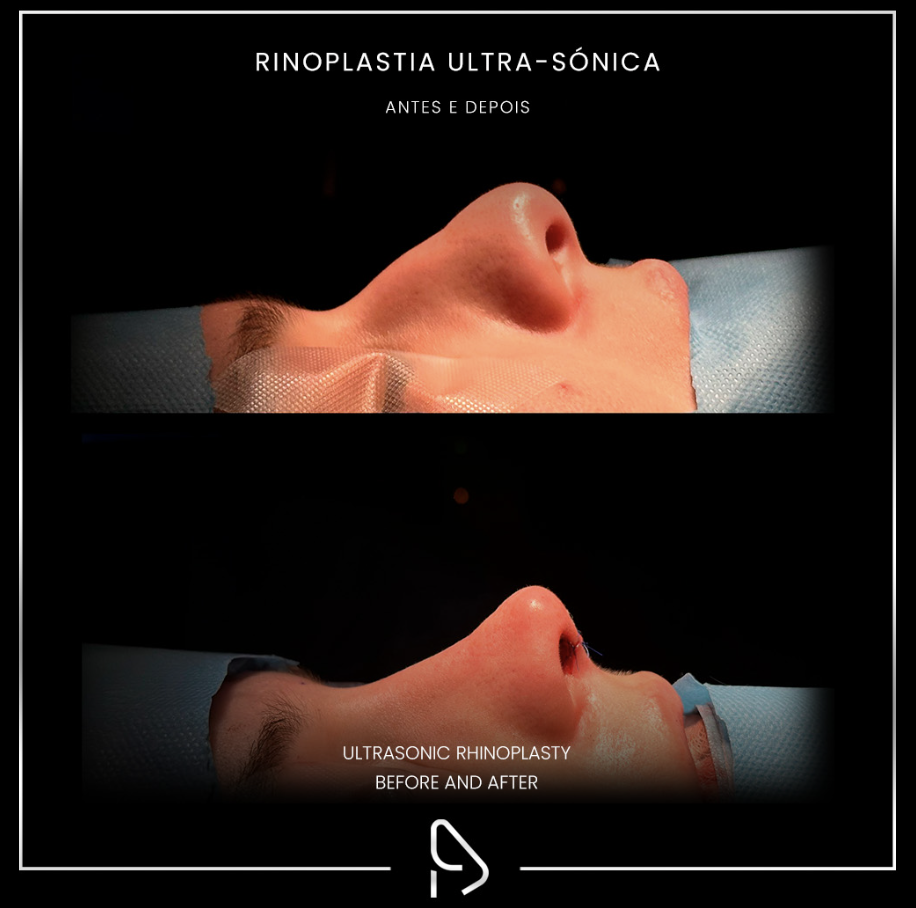
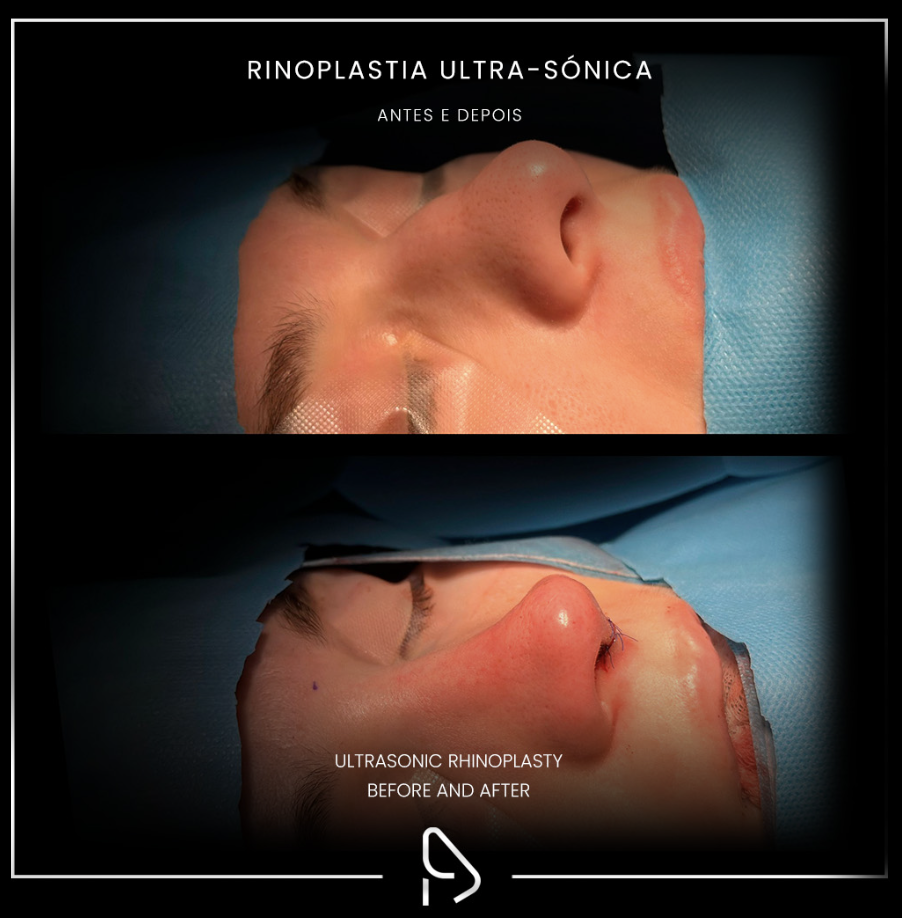
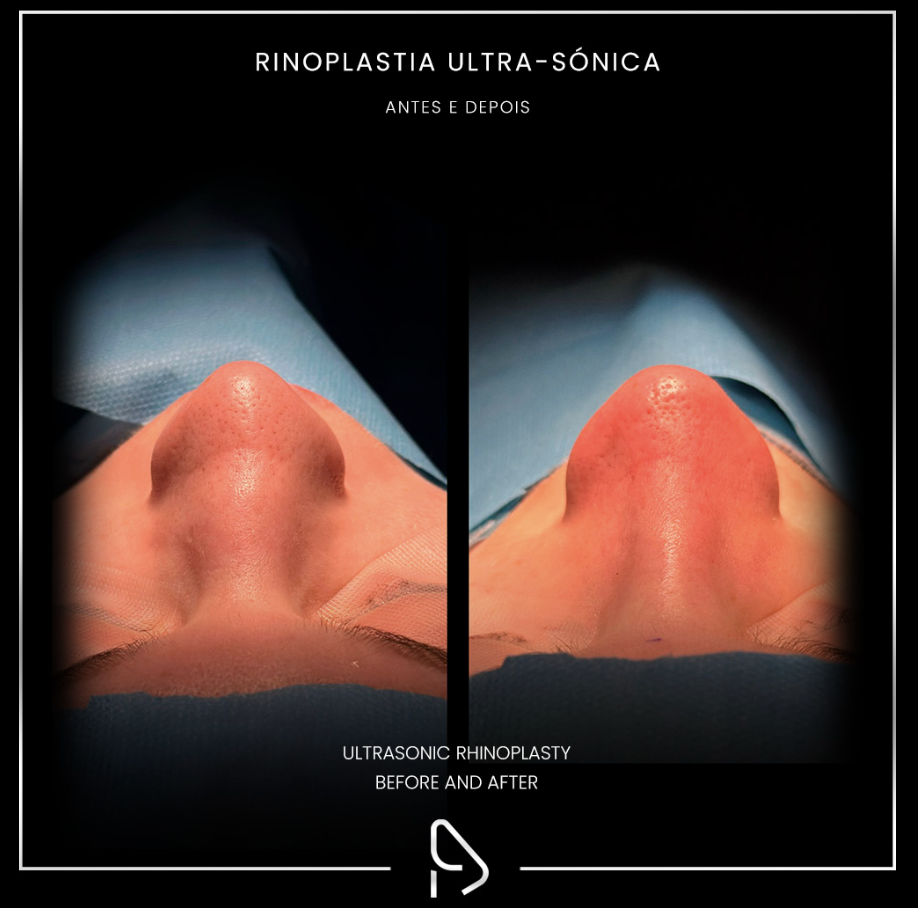
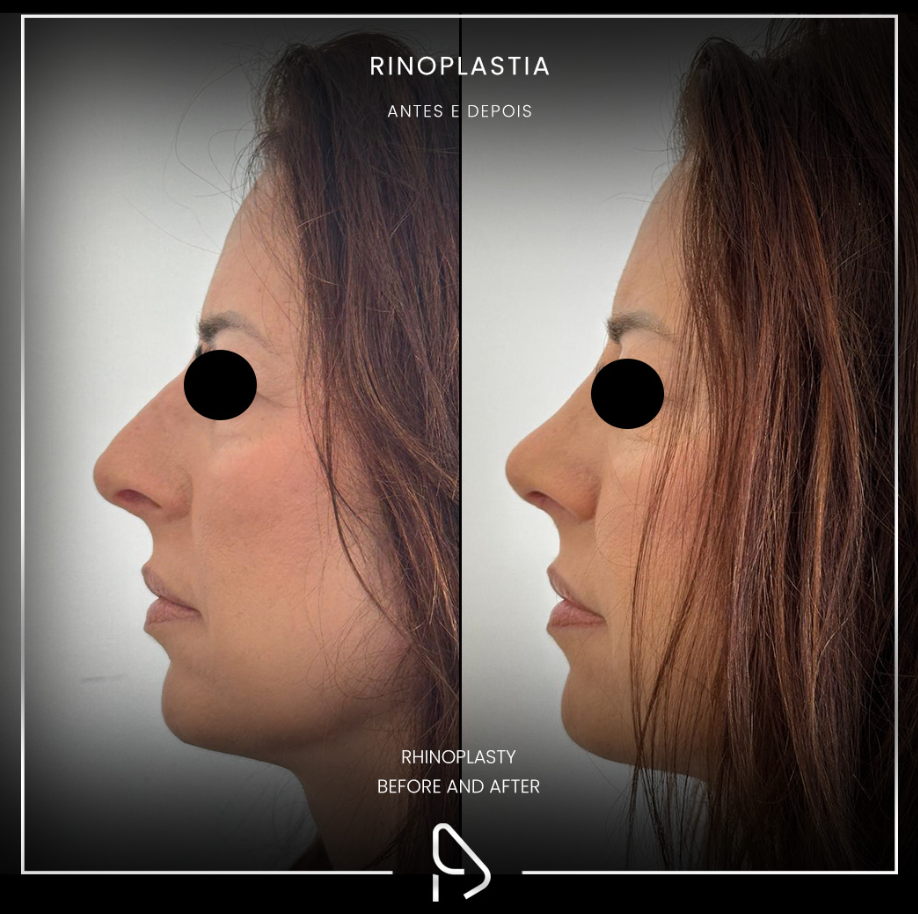
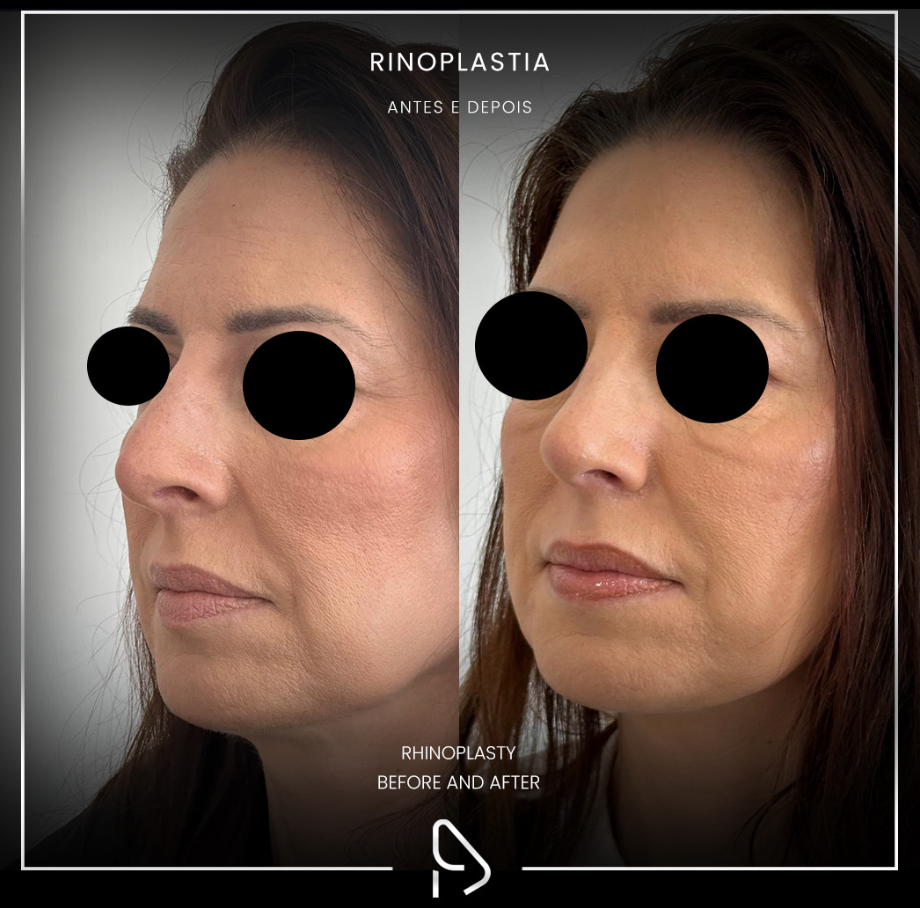
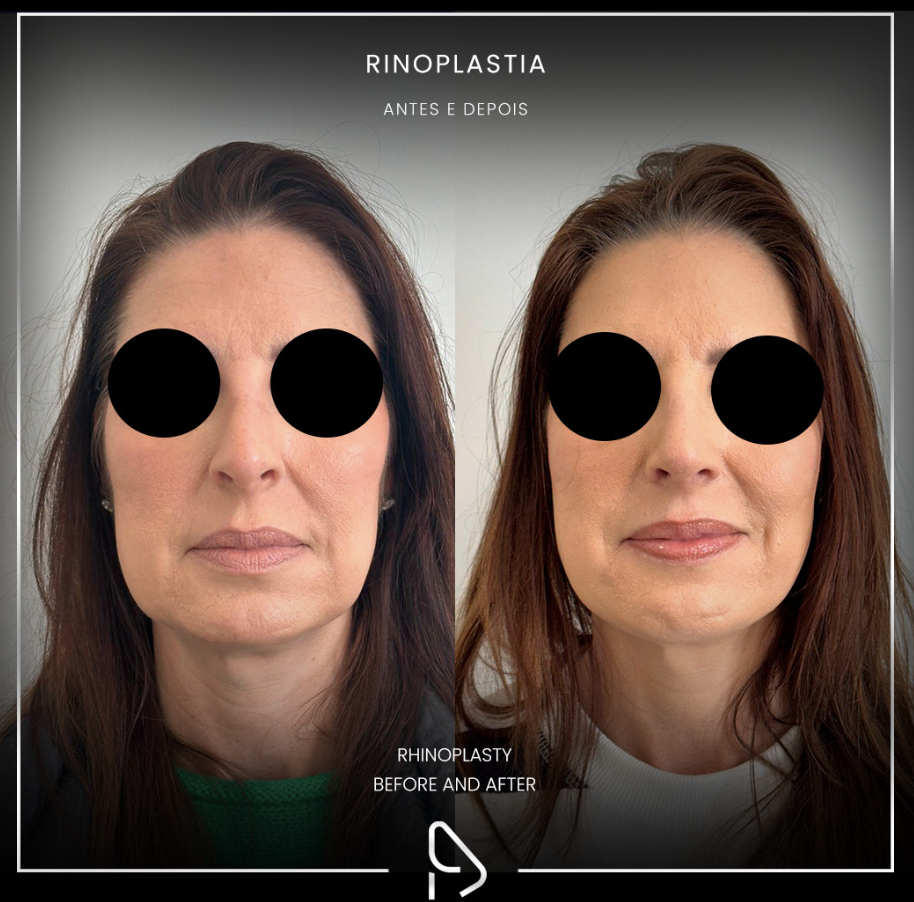
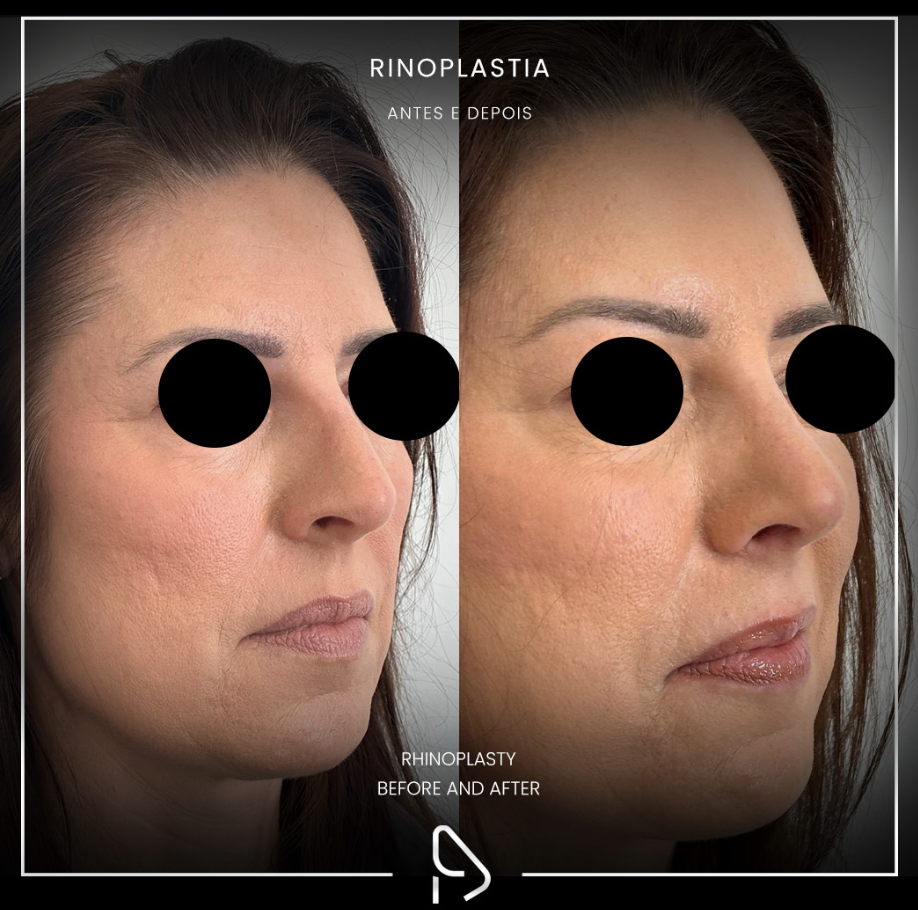
As fotos de "Antes" mostram a condição inicial do nariz dos pacientes, destacando aspectos que podem incluir desvio de septo, assimetrias, protuberâncias ou depressões na ponte nasal, entre outras características que os pacientes desejavam melhorar.
As fotos de "Depois" revelam os resultados alcançados após a rinoplastia. Com um novo formato, o nariz harmoniza melhor com o restante do rosto, corrigindo imperfeições e, muitas vezes, melhorando a respiração.
Initial consultation where functional and anatomical abnormalities are assessed. During this consultation, photographic records are taken, and an immediate simulation of the desired long-term result is performed.
At the second consultation, once the test results are available, the surgical plan is proposed. After six to eight weeks, the surgery can be scheduled.
The procedure is performed under general anesthesia and typically takes around three to four hours. It is usually done on an outpatient basis, meaning the patient can return home the same day.
At the first postoperative consultation, one week after surgery, the external nasal cast and the nasal splint (if used) are removed. From that point, the patient can resume normal activities.
Questions?
The cost depends on the anatomy and complexity of each case. It may also vary if a previous surgery has been performed. During the consultation, a complete clinical evaluation will be done, and a detailed quote will be provided. An estimated range can be given prior to the consultation.
Yes. The surgery can be paid for using different phased payment options. Several options are available, tailored to what is most convenient for each case.
When there is a functional component (such as nasal obstruction, rhinitis, or sinusitis), part of the surgery may be covered by your insurance or healthcare plan, subject to clinical evaluation.
Most patients can resume light activities within 7 to 14 days.
The average duration of primary rhinoplasty is between 2.5 to 4 hours. In the case of revision rhinoplasty, especially when rib cartilage harvesting is required, the procedure may take between 5 to 6 hours.
Yes. In addition to the aesthetic aspect, rhinoplasty can correct structural issues (such as a deviated septum, nasal valve problems, and others), contributing to improved breathing and helping treat conditions like chronic sinusitis.
Rhinoplasty is not considered a painful surgery. The most common complaint in the first few days is nasal obstruction or congestion, which results from natural swelling after the procedure and gradually improves.

©2025 Luís Almeida Dores • All rights reserved